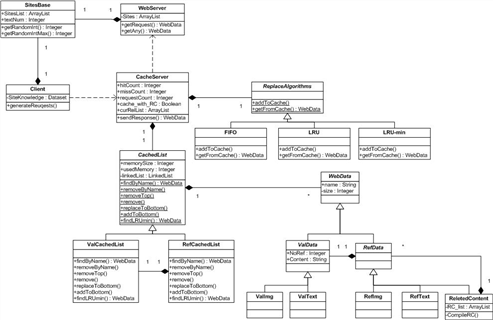1Author Name, 2Author Name, 3Author Name, 4Author Name
1, First AuthorAuthor Affiliation, E-mail
*2,Corresponding AuthorAuthor Affiliation, E-mail
3,4Author Affiliation, E-mail
Abstract
The abstract is to be in fully-justified italicized text as it is here, below the author information. Use the word “Abstract” as the title, in 12-point Times New Roman, boldface type, centered relative to the column, initially capitalized. The abstract is to be in 10-point, single-spaced type, and may be up to 3 in. (18 picas or 7.62 cm) long. Leave two blank lines after the abstract, then begin the main text. All manuscripts must be in English. All text material for 8.5 x 11-inch journal article will be formatted in a single column per page.
Keywords: keyword1, keyword2, keyword
1. Introduction
Congratulations! Your paper has been accepted for journal publication. Please follow the steps outlined below when submitting your final draft. These guidelines include complete descriptions of the fonts, spacing, and related information for producing your journal manuscripts. Please follow them.
2. Formatting your paper
All printed material, including text, illustrations, and charts, must be kept within the parameters of the 8 15/16-inch (53.75 picas) column length and 5 15/16-inch (36 picas) column width. Please do not write or print outside of the column parameters. Margins are 1 5/16 of an inch on the sides (8 picas), 7/8 of an inch on the top (5.5 picas), and 1 3/16 of an inch on the bottom (7 picas).
3. Main title
The main title (on the first page) should begin 1 3/16 inches (7 picas) from the top edge of the page, centered, and in Times New Roman 13-point, boldface type. Capitalize the first letter of nouns, pronouns, verbs, adjectives, and adverbs; do not capitalize articles, coordinate conjunctions, or prepositions (unless the title begins with such a word). Please initially capitalize only the first word in other titles, including section titles and first, second, and third-order headings (for example, “Titles and headings” — as in these guidelines). Leave two blank lines after the title.
4. Author name(s) and affiliation(s)
Author names and affiliations are to be centered beneath the title and printed in Times New Roman 11-point, non-boldface type. Multiple authors may be shown in a two or three-column format, with their affiliations below their respective names. Affiliations are centered below each author name, italicized, not bold. Include e-mail addresses if possible. Follow the author information by two blank lines before main text.
5. Second and following pages
The second and following pages should begin 1.0 inch (2.54 cm) from the top edge. On all pages, the bottom margin should be 1-3/16 inches (2.86 cm) from the bottom edge of the page for 8.5 x 11-inch paper; for A4 paper, approximately 1-5/8 inches (4.13 cm) from the bottom edge of the page.
6. Type-style and fonts
Wherever Times New Roman is specified, Times Roman, or Times may be used. If neither is available on your word processor, please use the font closest in appearance to Times New Roman that you have access to. Please avoid using bit-mapped fonts if possible. True-Type 1 fonts are preferred.
7. Main text
Type your main text in 10-point Times New Roman, single-spaced with 10-point interline spacing. Do not use double-spacing. All paragraphs should be indented 1 pica (approximately 1/6- or 0.17-inch or 0.422 cm). Be sure your text is fully justified—that is, flush left and flush right. Please do not place any additional blank lines between paragraphs.
Figure and table captions should be 10-point Helvetica boldface (or a similar sans-serif font). Callouts should be 10-point Helvetica, non-boldface. Initially capitalize only the first word of each figure caption and table title. Figures and tables must be numbered separately. For example: “Figure 1. Database contexts”, “Table 1. Input data”. Figure captions are to be below the figures. Table titles are to be centered above the tables.

Figure 1. Class Diagram for Caching Simulator using FIFO, LRU and LRU with related content
Table 1. Project selection matrix rules
if Project strength is | And Project attractiveness is | Then the project rank is |
Low Low Low Medium Medium Medium High High High | Low Medium High Low Medium High Low Medium High | Low Low Medium Low Medium High Medium High High |
8. First-order headings
For example, “1. Introduction”, should be Times New Roman 12-point boldface, initially capitalized, flush left, with one blank line before, and one blank line after. Use a period (“.”) after the heading number, not a colon.
8.1. Second-order headings
As in this heading, they should be Times New Roman 11-point boldface, initially capitalized, flush left, with one blank line before, and one after.
8.1.1. Third-order headings
Third-order headings, as in this paragraph, are discouraged. However, if you must use them, use 10-point Times New Roman, boldface, initially capitalized, flush left, preceded by one blank line, followed by a colon and your text on the same line.
9. Footnotes
Use footnotes sparingly (or not at all!) and place them at the bottom of the column on the page on which they are referenced. Use Times New Roman 10-point type, single-spaced with 10-point interlining spacing. To help your readers, avoid using footnotes altogether and include necessary peripheral observations in the text (within parentheses, if you prefer, as in this sentence).
10. References
List and number all bibliographical references in 10-point Times New Roman, single-spaced, at the end of your paper. For example, [1] is for a journal paper, [2] is for a book and [3] is for a conference(symposium) paper.
[1] Author1_Name, Author2_Name, “Paper Title ACASH: An Adaptive Web Caching method based on the Heterogeneity of Reference Characteristics”, Journal of AICIT, AICIT(Publication_Name), vol. 10, no. 4, pp.169-711, 2015.
[2] Author1_Name, Author2_Name, Web Caching and Replication, Addison-Wesley(Publication_ Name), USA, 2014
[3] Author1_Name, Author2_Name, “Exploring the bounds of Web latency reduction from caching and prefetching”, In Proceeding(s) of the AICIT Symposium(Conference) on Internet Technologies, pp.13-22, 2009.


